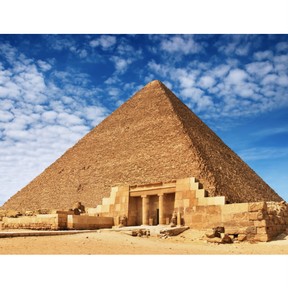
Ancient Egypt: The Old Kingdom
I can describe ancient Egyptian leaders, religion, and way of life in the Old...



8,000 schools use Gynzy
92,000 teachers use Gynzy
1,600,000 students use Gynzy
General
Students learn about life in the Old Kingdoms of Ancient Egypt, including the formation of the pyramids and the role of religion in the Ancient Egyptian government. They will explore the factors that contributed to the rise and fall of Ancient Egypt.
Learning Objective
Students will be able to describe the characteristics of the Old Kingdom in Ancient Egypt.
Introduction
Explain that Egypt’s history is divided into three time periods. Have students predict the answers to the questions presented. Then explain that the Old Kingdom was a time known as “The Age of Pyramids” in which grand pyramids were built. Share some more interesting facts.
Instruction
Begin by describing the role of the pharaoh during this time. Explain that the pharaohs were viewed as gods and share some of the pharaoh’s actions. After this, describe the building of the pyramids, like the Great Pyramid, and explain how they were used. Share some details about how pyramids were structured and the threat of grave robbers. Have students drag the checkmark or X to determine if the statements are true or false. Finally, share what may have led to the First Intermediate Period and the decline of the Old Kingdom. Students then drag the words to fill in the blanks in the passage provided.
Quiz
Check student understanding with ten multiple-choice, fill-in, and true or false questions.
Closing
Students will write from the point of view of a pharaoh in the Old Kingdom. They should describe the pyramid they would like built for them and why they feel it is important to build this structure. You might choose to have students draw an accompanying picture.
The online teaching platform for interactive whiteboards and displays in schools
Save time building lessons
Manage the classroom more efficiently
Increase student engagement
Discover more!
About Gynzy
Gynzy is an online teaching platform for interactive whiteboards and displays in schools.
With a focus on elementary education, Gynzy’s Whiteboard, digital tools, and activities make it easy for teachers to save time building lessons, increase student engagement, and make classroom management more efficient.



